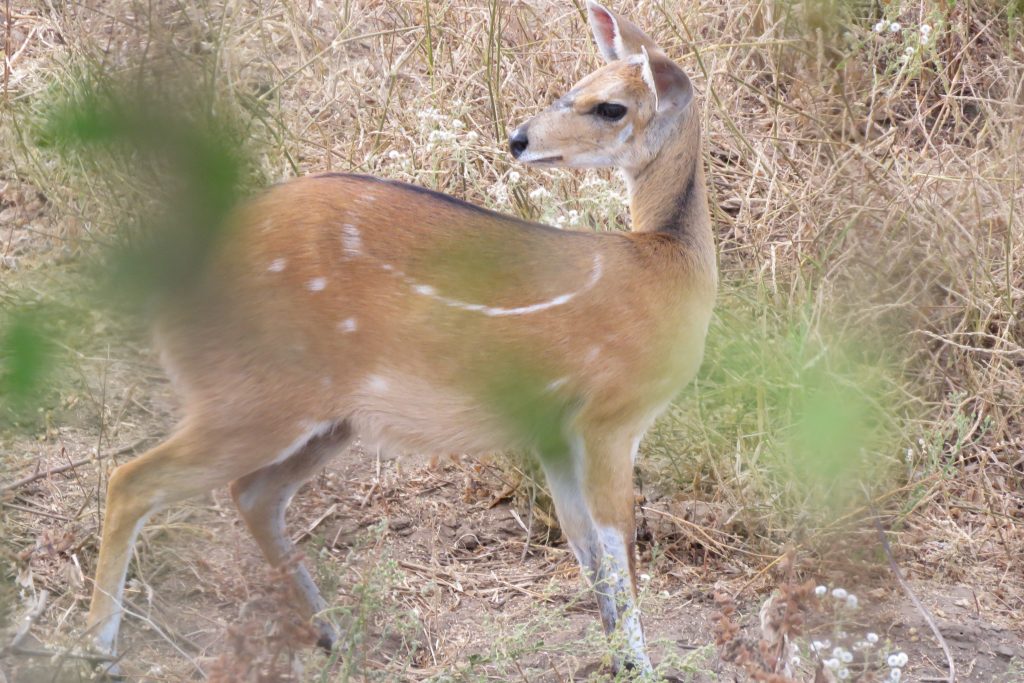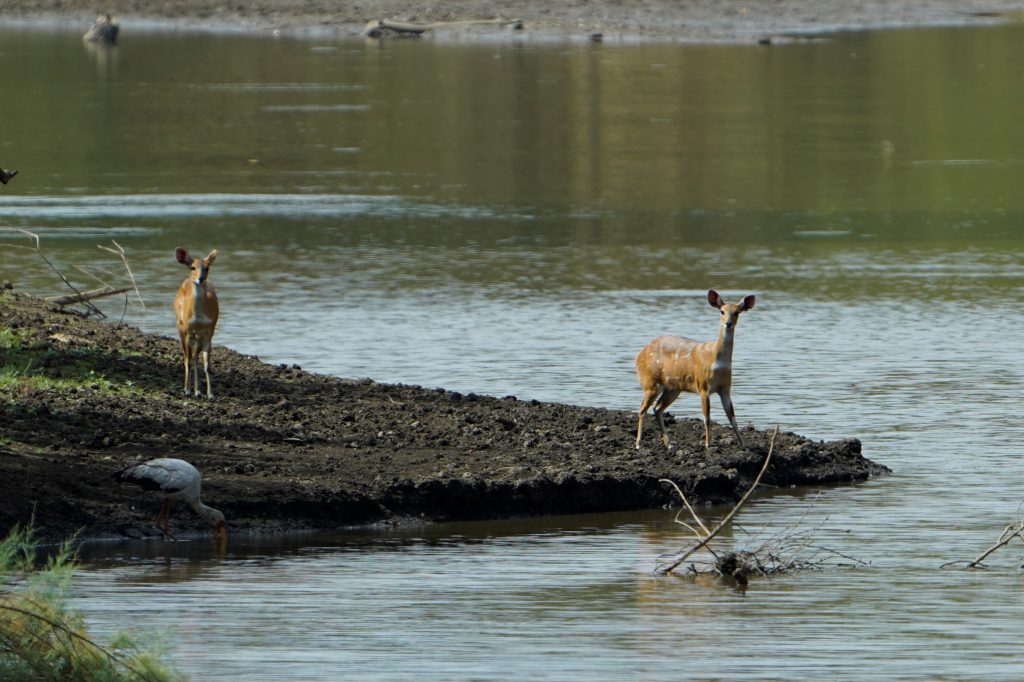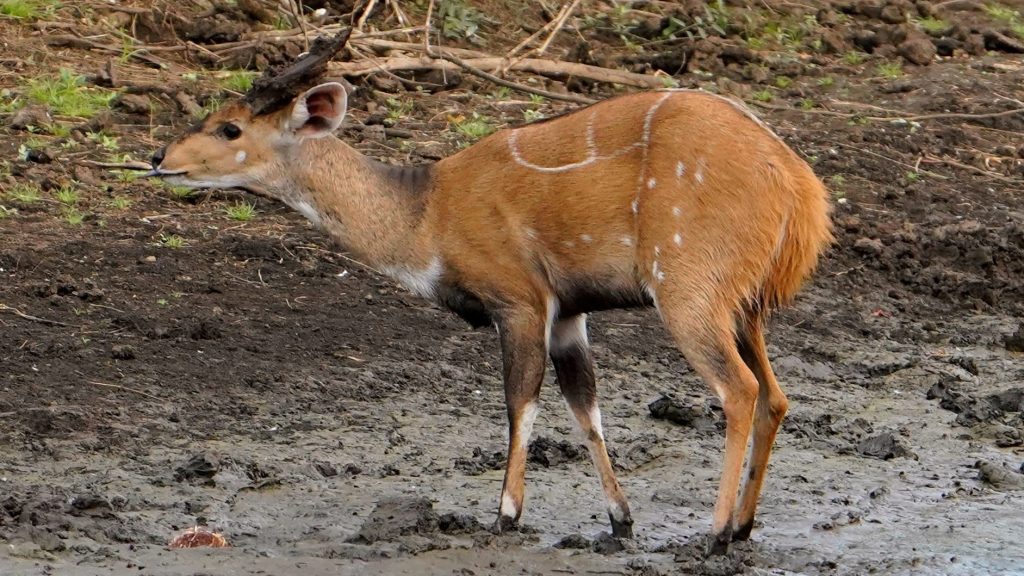Bushbuck Tragelaphus scriptus (local Name: Abu Nabah)
Description:
A medium-sized antelope. The high to shoulder ranges from sixty-five to one hundred and ten centimeters, and the weight varies between 30 to 77 kilograms. Colors varies greatly across its wide geographical range. Generally, the back and sides are brown to reddish-brown, while the lower parts of the abdomen and chest are dark. There are lines and white spots on the head, around the lips, cheeks, behind the knees, and on the sides of the body. These lines and white spots differ in shape and number from individual to individual. Males are larger in size than females and have straight horns with noticeable twists, reaching a length of up to 50 centimeters. The males are characterized by long hair on the neck and back, which stands up when the animal is agitated.
Distribution:
Endemic and widespread in Sub-Sahara Africa. From Senegal in west to Eritrea and Ethiopia in east to South Africa in South.
Distribution in Sudan:
In the past it was common species through south and east Sudan. Now it is common only in Dinder National Park with record from Kassala, Gadarif, Blue Nile, Southern Kordofan and Southern Darfur states.
Habitat:
Dense bushes in woodland and forest thickest along riverine.
Habit:
Bush Buck hide during the day in denes bushes usually not far from water and become active in the early morning and evening. They feed on tree leaves and rarely consume grass. Bushbuck typically exhibit a solitary lifestyle except during mating season. They are known to form family groups under certain circumstances. These family groups are often composed of a female and her offspring. The females are territorial and may defend their preferred areas, providing protection and resources for their young. Males are generally more solitary, establishing territories that overlap with those of several females. It breeds throughout the year. They are highly sensitive to sounds, emitting a barking-like sound similar to a dog’s bark when there is danger to warn other individuals of their kind about danger. Bush Buck are known to represent danger to hunters, especially when wounded, as they can move silently through grass, flank, and attack the hunter from behind.



